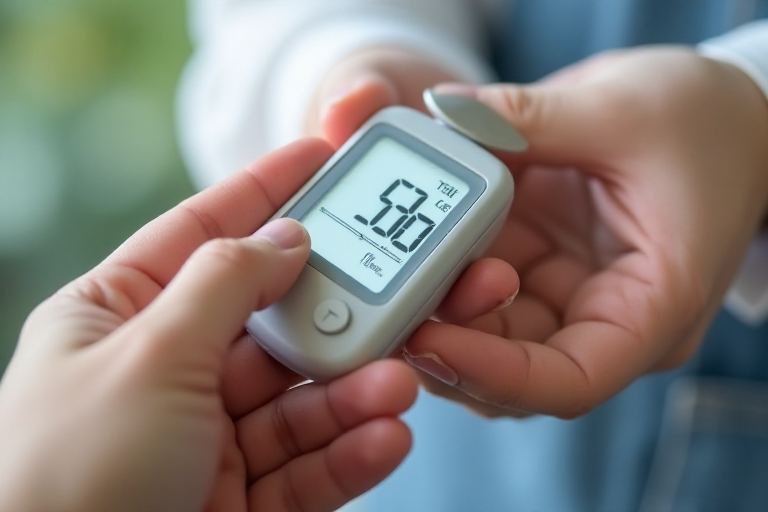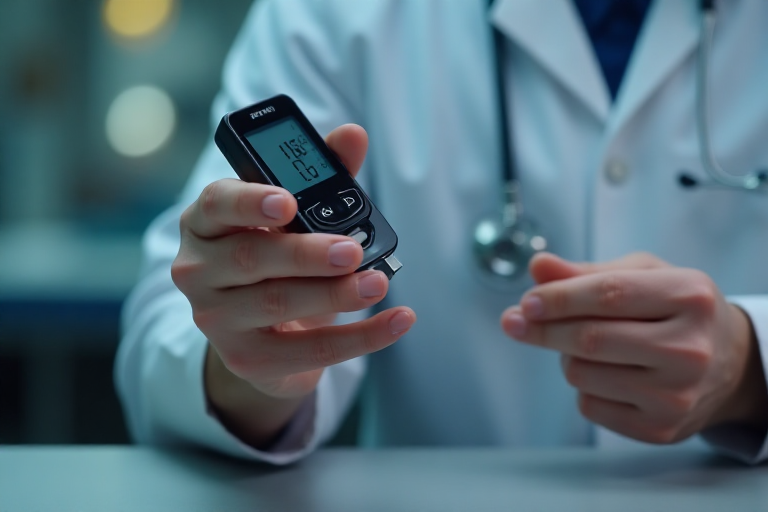Managing diabetes effectively requires constant monitoring of blood glucose levels. One of the most essential tools for this purpose is the blood glucose meter. This device has revolutionized the way individuals with diabetes can manage their condition, offering a quick and accurate way to measure blood sugar levels at home. In this article, we will delve into the intricacies of blood glucose meters, their importance, how they work, and tips for choosing the right one.
Blood glucose meters, also known as glucometers, are portable devices that measure the concentration of glucose in the blood. They are particularly crucial for people with diabetes, as maintaining blood sugar levels within a target range is vital for preventing complications. The device typically requires a small blood sample, usually obtained by pricking the finger with a lancet. The blood is then placed on a test strip, which is inserted into the meter. Within seconds, the meter displays the blood glucose level.
The importance of regular blood glucose monitoring cannot be overstated. For individuals with diabetes, keeping blood sugar levels in check is essential to avoid both short-term and long-term complications. Short-term complications include hypoglycemia (low blood sugar) and hyperglycemia (high blood sugar), both of which can be dangerous if not managed promptly. Long-term complications can include cardiovascular disease, nerve damage, kidney failure, and vision problems. By using a blood glucose meter, individuals can make informed decisions about their diet, exercise, and medication, thereby reducing the risk of these complications.
Modern blood glucose meters come with a variety of features designed to make monitoring easier and more effective. Some meters offer Bluetooth connectivity, allowing users to sync their data with smartphone apps. This can be particularly useful for tracking trends over time and sharing data with healthcare providers. Other features may include large, easy-to-read displays, backlighting for use in low-light conditions, and the ability to store multiple readings. Some meters even offer alternate site testing, allowing users to draw blood from less sensitive areas like the forearm or thigh.
When choosing a blood glucose meter, there are several factors to consider. Accuracy is paramount, as even small discrepancies can lead to incorrect treatment decisions. It’s also important to consider the cost of the meter and the test strips, as these can add up over time. Ease of use is another critical factor, especially for elderly users or those with limited dexterity. Additionally, consider the meter’s data management capabilities, as this can be crucial for long-term diabetes management.
Proper use of a blood glucose meter is essential for obtaining accurate readings. Always follow the manufacturer’s instructions for use. Ensure that your hands are clean and dry before testing, as contaminants can affect the results. Use a fresh lancet for each test to minimize discomfort and reduce the risk of infection. Store your meter and test strips according to the manufacturer’s guidelines to ensure their longevity and accuracy.
In conclusion, the blood glucose meter is an indispensable tool for anyone managing diabetes. It provides a quick, accurate, and convenient way to monitor blood sugar levels, enabling better control over the condition. By understanding how these devices work and what features to look for, individuals can make informed choices that enhance their diabetes management. Regular monitoring, combined with a healthy lifestyle and medical advice, can significantly improve the quality of life for those living with diabetes.



